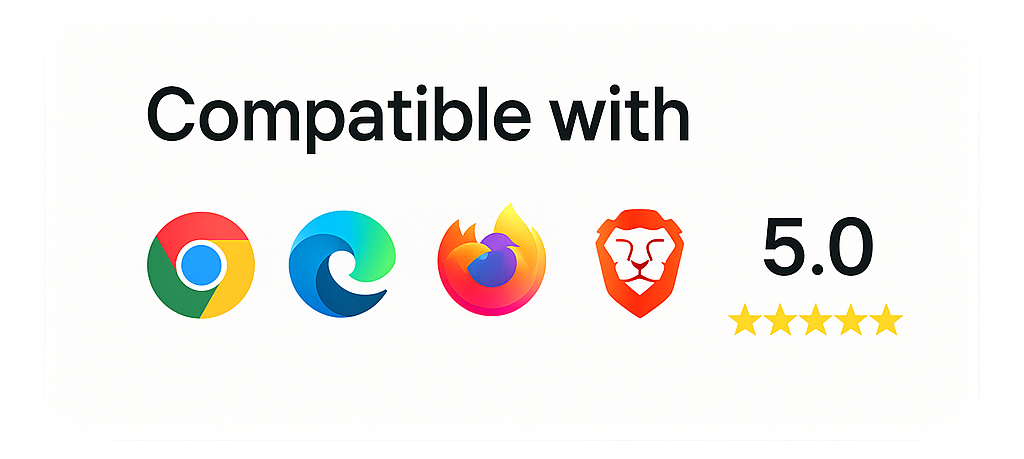Introduction: The Frequency That Dominates Modern Music
Most people have no idea that the music they listen to every day — from streaming platforms like Spotify and YouTube to radio, movies, and video games — is tuned to 440 Hz. This frequency, known as the modern concert pitch, was standardized in the mid-20th century.
But here’s the catch: many musicians, researchers, and wellness practitioners believe this tuning may not be in harmony with the human body and mind.
Could 440 Hz actually be contributing to anxiety, restlessness, or emotional imbalance? And is there a better alternative?
In this article, we’ll dive into:
- What 440 Hz really is
- The controversy surrounding it
- Why it might affect your nervous system
- The case for switching to 432 Hz
- And how to instantly retune your music with a simple Chrome extension
Let’s explore.
What Is 440 Hz? A Quick Primer
440 Hz refers to the tuning of the musical note A above middle C (A4) to vibrate at 440 cycles per second. It’s used as a standard reference pitch for tuning musical instruments in most of the Western world.
Before 440 Hz became the norm, tuning varied widely. In fact, 432 Hz was used by many classical composers and is often referred to as “Verdi’s A”, named after the famed Italian composer Giuseppe Verdi who advocated for it.
But Why Did 440 Hz Become the Standard?
In 1955, the International Organization for Standardization (ISO) adopted 440 Hz as the official concert pitch. The decision was based more on technical convenience than on any biological, emotional, or spiritual consideration.
Since then, most music across the globe has been tuned to 440 Hz, whether it’s pop, jazz, EDM, or classical.
The 440 Hz Controversy: Is It Actually Harmful?
Critics of 440 Hz argue that this frequency is disconnected from the natural vibration of the universe, human DNA, and the resonance of the Earth itself.
While hard scientific consensus is lacking, numerous reports and studies suggest that music tuned to 440 Hz:
- Feels more tense or aggressive
- Lacks emotional warmth
- Stimulates the sympathetic nervous system (the “fight or flight” response)
- May increase feelings of stress, anxiety, or unease
A 2010 study published in the Journal of Psychology and Music found that different tuning frequencies can indeed influence mood and perception. Participants listening to music in alternative tunings, such as 432 Hz, often reported a greater sense of relaxation and calm.
Why Your Brain and Body Might Respond Poorly to 440 Hz
Let’s talk science — simplified.
The human body is a bioelectrical system. Our brainwaves, heartbeat, and cellular communication are based on frequency and vibration.
Some researchers claim that 440 Hz disrupts natural harmonic patterns found in nature, the Schumann Resonance (~7.83 Hz), and the golden ratio — all of which are often associated with balance and harmony in biological systems.
In contrast, frequencies like 432 Hz are believed to align more closely with these natural patterns, promoting:
- Mental clarity
- Deep relaxation
- Better emotional regulation
- A deeper connection to the music
Testimonials: What Real Listeners Say About 440 Hz vs 432 Hz
“After switching to 432 Hz music, I noticed my workouts felt smoother, and I was less agitated throughout the day.” — Marcus T., Fitness Coach
“I always felt overstimulated when listening to my favorite EDM tracks. I didn’t realize it was the tuning until I started using a retuner. It changed everything.” — Rina K., Sound Therapist
“432 Hz music puts me in a meditative state almost instantly. 440 Hz feels… sharper, more mentally cluttered.” — Anonymous Reddit User
These aren’t isolated opinions. Entire communities across YouTube, Reddit, and wellness forums have embraced 432 Hz as a more emotionally aligned frequency.
So, What’s the Alternative? Meet 432 Hz — The Healing Frequency
432 Hz is often referred to as the “natural tuning” or the frequency of the universe.
Supporters claim it is:
- Mathematically aligned with nature (based on ratios of phi and pi)
- Resonant with the Earth’s natural frequency (Schumann Resonance)
- Easier on the ears and nervous system
- Deeply relaxing and heart-opening
Musicians like Bob Marley, Prince, and even some classical composers are believed to have experimented with 432 Hz tuning — not just for its sound, but for its soulful impact.
How to Retune Your Music — Without Changing Platforms or Files
Here’s the good news: You don’t have to go on a wild goose chase to find music in 432 Hz.
🎉 With the YouTube Music Re-Tuner Chrome Extension, you can instantly retune your favorite streaming YouTube and YouTube Music — directly in your browser.
No downloading. No technical knowledge. Just one click and you’re listening in harmony.
Benefits of Using the Music Retuner Extension
✅ Works in real-time — no need to convert files
✅ Supports most major streaming platforms
✅ Improves your mood, focus, and energy
✅ Free to use and easy to install
✅ Helps you rediscover your favorite songs in a new light
Your music stays the same — but your experience transforms.
Final Thoughts: Tuning Into Wellness
While the debate between 440 Hz and 432 Hz continues in scientific and musical circles, what truly matters is how you feel.
If you’ve been struggling with anxiety, tension, or overstimulation, your music might be playing a subtle but significant role.
By simply retuning to 432 Hz, you can unlock a more harmonious, centered, and peaceful listening experience — all without changing your playlists.
✅ Try It Now — Retune Your Music in One Click
Ready to hear and feel the difference?
👉 Install the YouTube Music Re-Tuner Chrome Extension and start experiencing your favorite tracks the way they were meant to sound — in harmony with you.
Let your music heal, not harm. Choose your frequency wisely.

